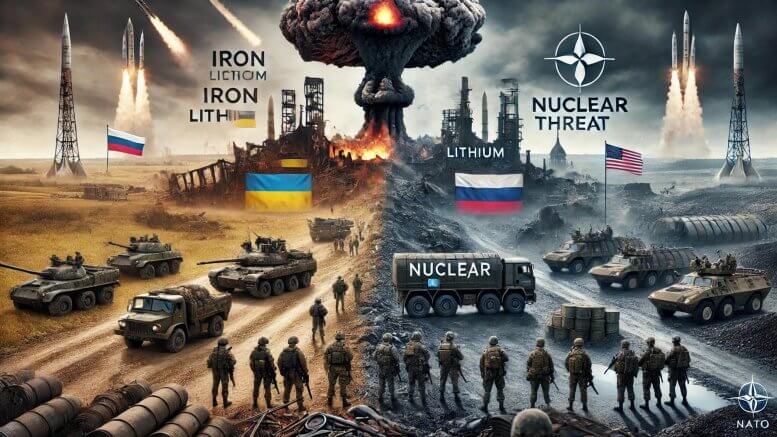Playback speed:
Reading Michael Snyder’s piece It’s All About The Money: There Are Tens Of Trillions Of Reasons Why Both Sides Are So Determined To Win In Ukraine raises several points about the ongoing conflict in Ukraine, emphasizing the significant natural resources in the region and the geopolitical interests of various nations. Here’s an analysis of the key points:
Natural Resources as a Major Factor
The article argues that Ukraine’s vast natural resources, including titanium, iron ore, lithium, and coal, are a significant factor in the conflict. It suggests that these resources, especially those in eastern Ukraine, are highly valuable and a major motivation for the involved parties, particularly Russia and Western nations. This perspective aligns with the broader understanding that economic interests often underpin geopolitical conflicts.
Western and Russian Interests
It highlights statements from U.S. Senator Lindsey Graham and references a Washington Post article, both pointing to the critical mineral wealth of Ukraine and its importance to the West. The implication is that the war is not just about democracy and freedom, as often publicly stated, but also about securing these valuable resources. This perspective is somewhat critical of the official narratives and suggests a more pragmatic and economically driven motive behind Western support for Ukraine.
Escalation and Military Involvement
The article mentions the potential deployment of U.S. military contractors to Ukraine and the involvement of North Korean military engineers on the Russian side, indicating a further escalation of the conflict. It warns of the dangers of escalating military actions and the risks of involving additional countries, which could lead to broader and more destructive warfare.
Nuclear Threats
It discusses Russia’s updates to its nuclear doctrine, making it easier for them to use nuclear weapons, and quotes Russian leaders making severe threats. This highlights the potential for the conflict to escalate into a nuclear confrontation, a concern that adds a grave dimension to the ongoing war.
Call for Peaceful Resolution
Despite recognizing the high stakes and the immense value of the natural resources, the article ultimately calls for leaders on both sides to seek a peaceful resolution to avoid catastrophic consequences.
Critical View of War Spending
The article also criticizes the enormous financial cost to American taxpayers, suggesting that the massive expenditure on the war might not be justifiable if the conflict is indeed driven by resource acquisition rather than higher ideals like democracy and freedom.
Conclusion
The article provides a critical and somewhat skeptical view of the motivations behind the conflict in Ukraine, emphasizing economic interests over ideological ones. It warns of the dangers of escalation and calls for a peaceful resolution to prevent further loss of life and potential global catastrophe.
Reflection on the Content:
- Economic Motives: The emphasis on natural resources is a valid consideration in understanding the conflict’s complexity. Wars often have underlying economic interests.
- Geopolitical Stakes: The involvement of major powers like the U.S. and Russia, and now even North Korea, underscores the high geopolitical stakes.
- Nuclear Risk: The nuclear dimension is a serious concern and rightly highlighted as a potential risk.
- Criticism of Public Narrative: The critique of the public narrative about democracy and freedom versus economic interests is thought-provoking and invites readers to consider multiple facets of the conflict.
In summary, the article provides a comprehensive and critical analysis of the Ukraine conflict, urging a deeper look at the underlying motives and the potential consequences of continued escalation.

